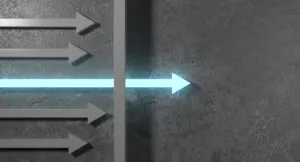Overview of winding wires and coating resins for electric vehicle motors
Winding wires or insulated copper wires wrap densely around the core of electric motors that power battery-electric vehicles (“EVs”), i.e., without any gasoline engine. The global market for such winding wires (aka magnetic or enamel wire) is in a state of flux. The case is no different with resin, a thin coating applied to winding wires and comprising one-to-four layers of polymer film. Epoxies, polyamides, and polyesterimides are some of the most common resins used to insulate wires used for winding various kinds of EV motors. These include permanent magnet brushless DC motors, permanent magnet synchronous motors, induction motors, switched reluctance motors, synchronous reluctance motors, and PM-assisted synchronous reluctance motors. Our client is a provider of winding wires and coating resins in global markets.
Client’s business situation
The EV industry is expecting a broader shift to larger vehicles with 800V powertrains capable of taking on turbocharged fossil-fuel vehicles by, say, 2026. Eventually, these are expected to be able to replace combustion vehicles. So, migrating from the current crop of 400V motors, the prevailing industry standard, is crucial, most of all to reduce refueling time. Higher-speed motors generate more power per unit volume (power density) while weighing less, which in turn, translates to better fuel economy and driving performance for EVs. Reduced environmental pollution makes lighter EVs a much greener and cleaner proposition. True, the 800V system trumps its 600V predecessor on most counts. Even so, with the shift to 800V, experts have flagged increased chances of partial electric discharge (PD), which could progressively degrade existing insulating materials and eventually lead to electrical breakdown.
Besides, competition for the client comes from a variety of market participants. To improve traction in the global market for winding wires and coating resins and maintain its competitive advantage, the client turned to our intelligence experts for a market assessment covering the period 2021-2030 covering the following aspects.
- Assessment of the EV main engine motor market
- Evaluation of the market for EV main engine motor winding wire
- Estimation of the market for winding wire resin used in EV main engine motors
Our Market Intelligence Solutions – A Success Story
As mandated by the client, our team of market intelligence professionals proceeded to perform a granular study of the market for winding wires and coating resins for EV motors. Our experts segmented the EV main engine motor market by geography (e.g., the Americas, APAC, and EMEA) and, furthermore, by voltage systems (400V, 600V, 800V). Likewise, the EV main engine motor winding wire market was also segregated by geography and voltage. The EV main engine motor winding wire resin market was broken down by resin type (such as polyamide-imide, polyimide, polyesterimide), apart from geography and voltage. The market assessment also included separate supplier mappings (e.g., magnetic wire suppliers, coating suppliers) for systems of up to 600V as well as 600V or higher.
The shift toward 800V powertrains means producers of organic insulations (e.g., epoxy), such as our client, must drive changes to the composition of wire insulations, on priority, so they can withstand the impact of PD better. Besides, rectangular magnet wires and hair pin windings are rapidly gaining favor with manufacturers of high-voltage EVs. At least one competitor is seeing the emergence of rectangular magnet wires as a step-up opportunity.
Higher voltage is also the reason why many manufacturers are embracing polyether ether ketone (PEEK) as an insulation material in electric traction motors. Development of secondary insulation for EV motors was also a key trend in the winding wire resin market. E-axle technology is trending upward, and this, along with growing demand for axial flux motors as well as breakthrough in battery tech, is going to be a key factor influencing the client’s growth in the period leading up to 2030.
Coming to the client’s competitive landscape, our study suggests the competition for the client comes from a variety of sources. These include electric vehicle OEMs, EV motor manufacturers, EV motor winding wire companies, EV motor winding wire resin producers and suppliers. Our marketing intelligence team profiled as many as 5 key competitors each in the winding wire and winding wire resin markets.
Business Outcome for the Client
Our market intelligence experts offered the client a comprehensive analysis of the current market for winding wires and coating resins for EV motors. This engagement also helped the client identify major business and technology trends across key markets, namely, the Americas, APAC, and EMEA.
Get in touch with our market intelligence experts to gain traction over your competitors and rapid business growth


